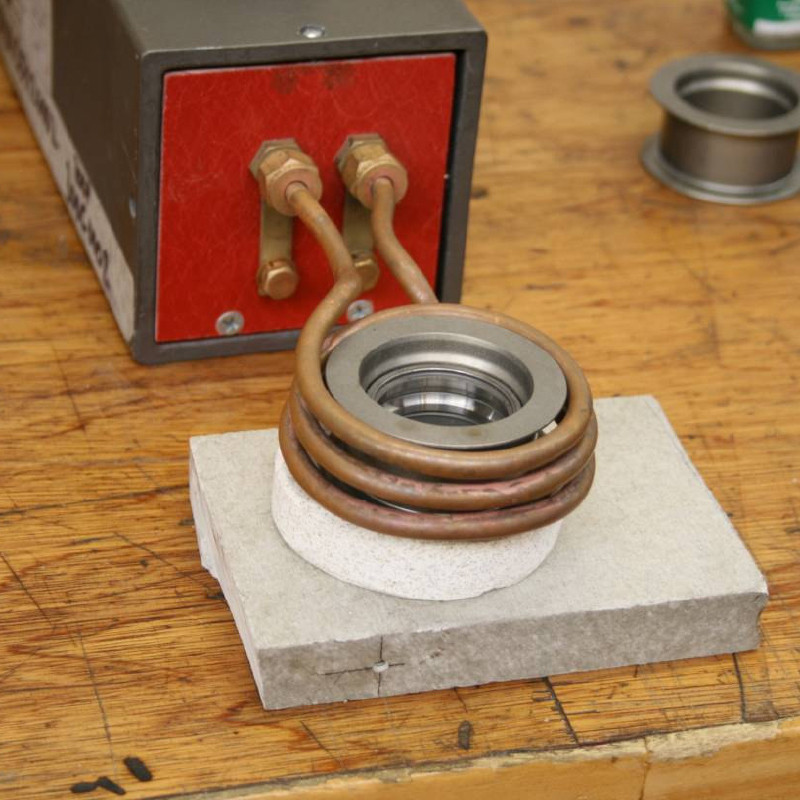

Sie müssen eingeloggt sein
Category


Fotos dienen nur zu Informationszwecken.
please use latin characters
Objective: To heat aluminum pulley for insertion of an inner bearing for the automotive industry.
Frequency: 283 kHz
Material: Aluminum pulley 2.3” (60mm) OD x 1.6” (40mm) ID x 1” (27mm) high and inner bearing 0.7” (17.8mm) high x 1.6” (40mm) dia.
Temperature: 464 °F (240 °C)
A three turn helical coil is used to heat the aluminum pulley. The pulley is heated to 464 ºF (240 ºC) in 20 seconds to expand the inner diameter and then the inner bearing is inserted to form the completed part.
Interessieren Sie sich für dieses Produkt? Benötigen Sie zusätzliche Informationen oder individuelle Preise?
Sie müssen eingeloggt sein
Objective: To heat aluminum pulley for insertion of an inner bearing for the automotive industry.
Frequency: 283 kHz
Material: Aluminum pulley 2.3” (60mm) OD x 1.6” (40mm) ID x 1” (27mm) high and inner bearing 0.7” (17.8mm) high x 1.6” (40mm) dia.
Temperature: 464 °F (240 °C)
A three turn helical coil is used to heat the aluminum pulley. The pulley is heated to 464 ºF (240 ºC) in 20 seconds to expand the inner diameter and then the inner bearing is inserted to form the completed part.
Your review appreciation cannot be sent
Report comment
Report sent
Your report cannot be sent
Eigenen Kommentar verfassen
Review sent
Your review cannot be sent
